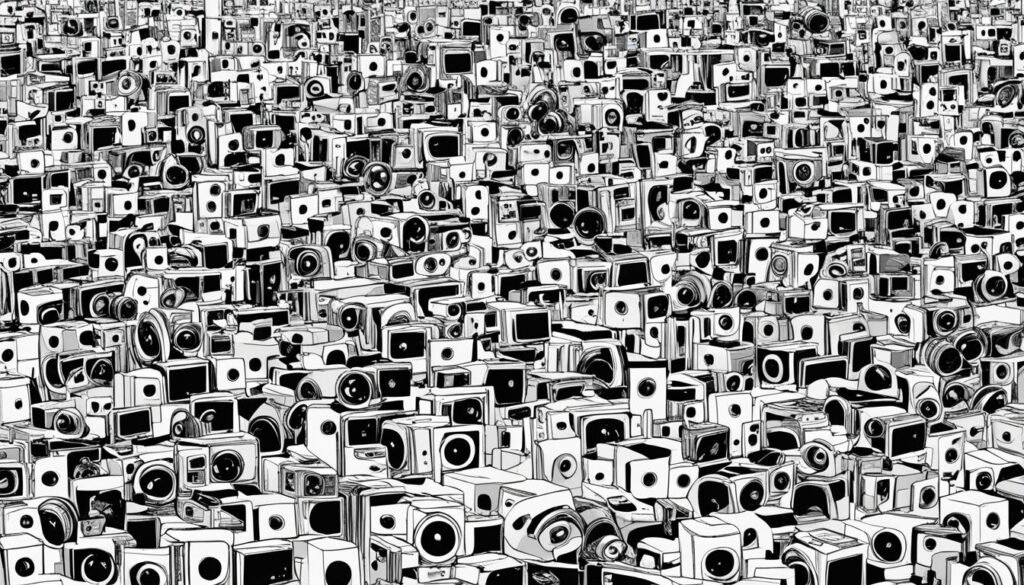Have you ever thought about how tracking devices are changing our world? They’re not just for tracking things; they’re changing how we keep our stuff, our loved ones, and ourselves safe.
This guide will take you through the exciting world of tracking devices and their effects on different fields. We’ll look at how location monitoring technology has grown from simple beginnings to today’s advanced real-time tracking.
We’ll dive into what makes modern GPS trackers special. Whether you run a business or just want to keep your family safe, this guide will show you the best tracking options for you.
Get ready to see how 5G is making tracking devices better. We’ll also talk about the balance between keeping things safe and respecting privacy in this fast-changing area. Join us as we explore the power of tracking technology and how it can change our lives.
Understanding the Evolution of Tracking Technology
Tracking technology has changed a lot over time. It started with GPS tracking and has now become more advanced with IoT devices. This change has brought new chances for use in many areas.
From GPS to IoT: The Journey of Location Monitoring
The move from simple GPS to advanced IoT devices is a big step forward. Now, GPS trackers vary in size and type to meet different needs. Some work over short distances with Bluetooth, while others track globally with full GPS.
Real-Time Tracking: A Game-Changer in Various Industries
Real-time tracking has changed the game in fields like logistics and managing fleets. It’s also key for personal safety. In the US, a bike gets stolen every 3 minutes, but GPS trackers can help. For example, the Apple AirTag is super light, and the Invoxia Real Time GPS Tracker is a bit heavier but still keeps you updated on your location.
The Impact of 5G on Tracking Device Capabilities
The arrival of 5G technology will boost tracking even more. With quicker data transfer and better accuracy, 5G will make tracking devices more reliable. This will lead to new ways to use tracking in our daily lives and at work.
Top Features to Look for in Modern Tracking Devices
Modern tracking devices are packed with impressive features. GPS accuracy is a key factor, giving users precise location data. High-end models can pinpoint locations within a few meters.
Battery life is key for long-term use. Top trackers can last up to several days on one charge. This is great for continuous monitoring without needing to recharge often.
Geofencing adds smart functionality. Users can set virtual boundaries. They get alerts when an object moves in or out of these areas. This is useful for managing fleets and keeping kids safe.
For outdoor use, water resistance is essential. Many trackers have an IPX4 rating, protecting against splashes and sweat. Some can even handle full waterproofing in harsh weather.
Advanced trackers offer two-way communication and SOS buttons for emergencies. They work with smartphone apps for easy monitoring and control. These features make tracking solutions comprehensive for different needs.
GPS Trackers: The Backbone of Location Monitoring
GPS tracking is key to modern location systems. It uses satellites to find exact spots on Earth. This tech does complex math and uses satellite triangulation for accurate locations.
How GPS Trackers Work
GPS devices use a network of satellites around Earth. These satellites send out signals. When a GPS device gets signals from several satellites, it figures out where it is through triangulation. This makes finding your exact location in real-time possible.
Advantages in Personal and Professional Use
GPS tracking has many benefits. For people, it keeps loved ones safe by tracking their locations. At work, it helps manage fleets better and use resources wisely. It also keeps a detailed history of where you’ve been, helpful for both personal and business use.
Limitations and Challenges
GPS technology has its downsides. It can lose accuracy in cities with tall buildings or indoors where signals are weak. There are also privacy worries, as GPS tracking could be a threat to personal freedom if not used right. Users need to know these issues when using GPS tracking.
Vehicle Tracking Systems: Revolutionizing Fleet Management
Fleet management has changed a lot with vehicle tracking systems. These systems give real-time info on where vehicles are, how fast they’re going, and how well they’re doing. This helps businesses run smoother and work better.
Vehicle telematics are key in today’s fleet management. They collect data from vehicles. This data helps fleet managers understand driver habits, how to improve routes, and when maintenance is needed. This info helps companies make better decisions, leading to better performance and lower costs.
Vehicle tracking systems also make fleets more fuel-efficient. By watching how drivers drive, managers can find ways to use less fuel. This cuts down on costs and helps the environment.
The market for vehicle tracking systems is growing fast. It’s expected to hit $104.89 billion by 2031, growing at 12.07% a year from 2024 to 2031. This growth is thanks to new technology and more demand in different industries.
As vehicle tracking systems get better, they offer more features like predictive maintenance alerts and checking for rules. These features help fleet managers fix problems before they start, keep drivers safe, and follow the law. This is changing fleet management a lot.
Asset Tracking: Protecting Valuable Equipment and Inventory
Asset tracking systems are key to keeping valuable equipment and inventory safe. They give real-time updates on where things are and their condition. This helps with better control over inventory and managing assets.
RFID vs GPS: Choosing the Right Technology for Asset Tracking
Businesses have to pick between RFID tracking and GPS for asset tracking. RFID is great for keeping an eye on things close by, perfect for managing inventory in warehouses. GPS is better for tracking things over long distances, like for managing fleets.
Industry-Specific Asset Tracking Solutions
Every industry has its own needs for asset tracking. For example, healthcare uses RFID for tracking medical equipment. Logistics companies often use GPS for tracking their fleets. This way, solutions fit the specific needs of different sectors.
The Role of IoT in Enhancing Asset Tracking Efficiency
IoT is changing how we manage inventory and track assets. It connects with other smart systems to give detailed data analytics. This helps businesses make better decisions, use assets wisely, and cut down on losses.
The use of IoT in asset tracking is growing fast, just like other tech areas. For example, the iShares S & P SmallCap 600 UCITS ETF, which includes many tech companies, has gone up by 8% this year. This shows strong growth in the tech sector.
Pet Trackers: Keeping Your Furry Friends Safe and Sound
Pet GPS trackers have changed the game for pet safety. They are small devices that clip onto your pet’s collar. They give you updates on your pet’s location in real-time. This tech greatly boosts the chances of finding lost pets. The American Veterinary Medical Association says over 52% of microchipped dogs are found, while only 22% without chips are.
Today’s pet trackers do more than just show where your pet is. They track your pet’s health by monitoring their activity. This includes tracking how much they exercise, sleep, and even how many calories they burn. This info is key for keeping your pet healthy and spotting any health issues early.
Some pet trackers have a cool feature called geofencing. This lets you set virtual boundaries for your pet. If your pet goes beyond these areas, the tracker alerts you right away. Some trackers even let you talk to your pet from anywhere.
Getting a pet GPS tracker is a wise move for any pet owner. It gives you peace of mind, keeps your pet safe, and helps with their health through activity tracking. As technology gets better, these devices are becoming more important in caring for our pets.
Personal Safety Devices: Tracking for Peace of Mind
Personal safety trackers are now key for protecting those who need extra care. They have many features to keep users safe and give their families peace of mind.
Wearable Trackers for Children and Elderly Care
Wearable GPS devices are becoming more popular for keeping kids and elderly people safe. These small gadgets let caregivers track their loved ones in real-time. This way, they can find them quickly if they get lost or need help.
Emergency Features in Personal Safety Tracking Devices
Many personal safety trackers have important emergency features. SOS buttons let users call for help right away. Fall detection alerts caregivers if someone elderly falls. Some devices also use geofencing to alert caregivers if someone leaves a safe area.
Privacy Concerns and Ethical Considerations
Personal safety trackers bring many benefits but also raise privacy issues. Users must think about the trade-off between constant monitoring and personal freedom. It’s important to pick devices with strong privacy settings and use them wisely, respecting the privacy of those being tracked.
As technology gets better, personal safety trackers keep improving. They offer more advanced features while also addressing privacy worries. By thinking about individual needs and ethical issues, these devices can greatly improve safety and give people peace of mind.
Tracking Devices: Balancing Functionality and Privacy
In today’s digital world, tracking devices bring many benefits but also raise big questions about privacy. They help us in many ways but also make us think about how our data is used. It’s important to know how our info is handled to protect our privacy.
Getting user consent is key to fair tracking. Companies need to be open about how they use our data. This is crucial for those who might be more vulnerable, like kids or the elderly. By being clear and getting the right consent, companies can earn trust and offer useful services.
But, tracking tech can be misused, threatening our privacy. We need strong rules to stop this. Leaders in tech and government must work together to make and follow strict rules. These rules will help make sure tracking devices are used right, without hurting our rights or safety.

